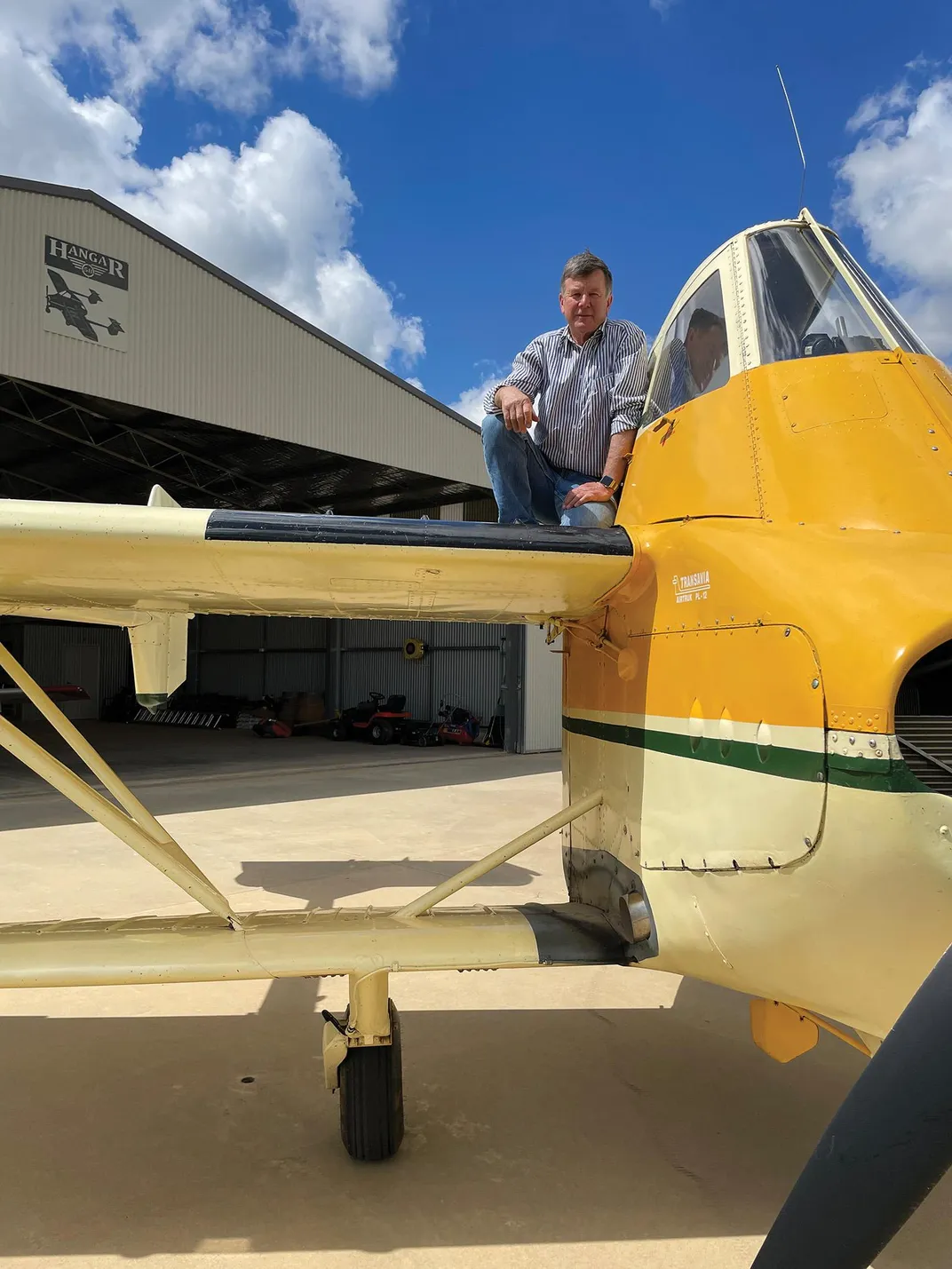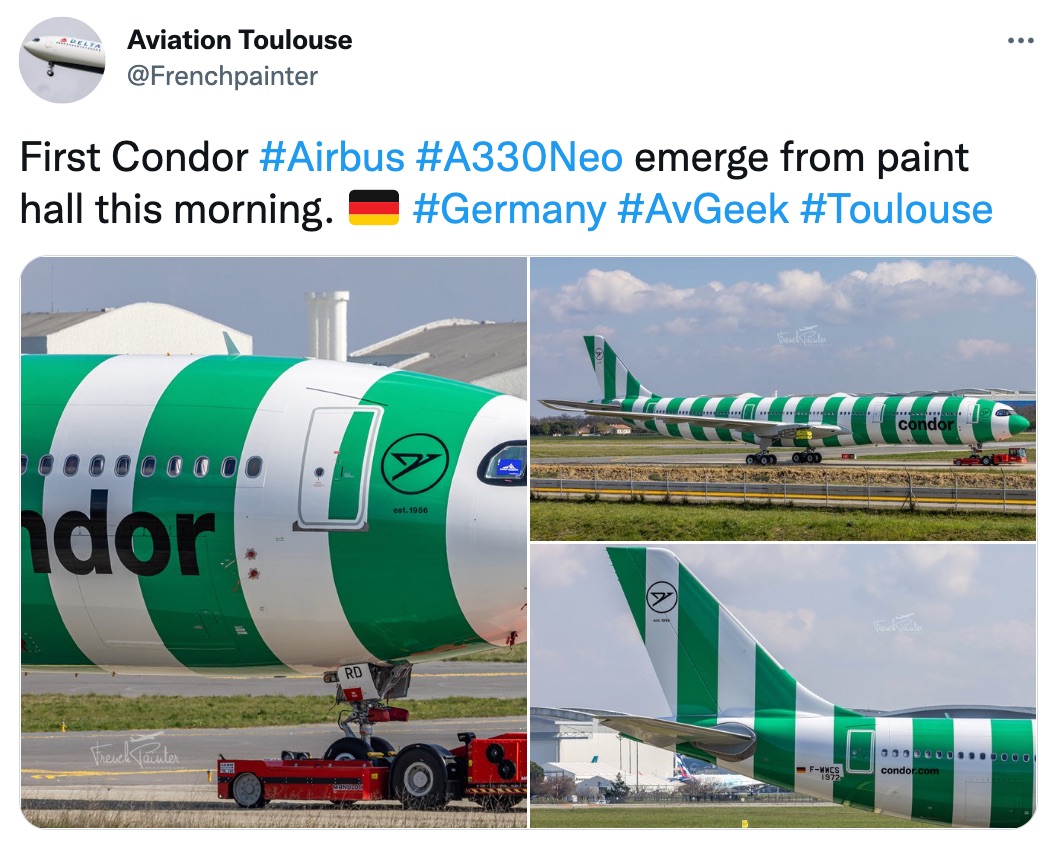Ugliest Aircraft - A rare three-ship formation of Transavia PL-12 AirTruks by Ian Bell (in yellow) with Nick Wills (centre) and Steve Mott (top) takes off at the October 2018 Airshow in Temora, New South Wales, Australia.
It is one of the most amazing looking aircraft ever to enter production. Conceived in Australia, gestation in New Zealand, and growth and maturity in Australia. This geography and the limitless thinking about TransAvia AirTruk's mission led to the aircraft's unusual appearance.
Ugliest Aircraft

In the year In the mid-1950s, the agricultural nation of New Zealand needed new aircraft to carry out "farming" - the application of soil conditioners and fertilizers in the air - what we on this side of the world call " crop". The old aircraft inherited from the British Commonwealth, mainly modified Havilland Tiger Moths and Piper Cub-style Austers, were obsolete. A few new American designs were imported, but the currency restrictions of the time made them very expensive. New Zealand needed a locally built aircraft designed for the job and sold at an affordable price.
Ugliest Plane Competition?
New Zealand Northern Air Service operators Jack Worthington and Snow Bennett found a good starting point in a PL-7 built by Kingsford Smith Aviation Services near Sydney, Australia. The PL-7 was the brainchild of Italian aircraft designer Luigi Pellarini. Pellarini was not one to be bound by convention: his earlier flying car design was marketed in Italy after World War II, when most Italians could not afford it as a motorized scooter. Failed. (Not entirely his fault. Sixty-five years later, no one had succeeded in commercializing a flying car.) He sought greener pastures in Australia to design an agricultural plane. Although they don't look like anything that has been flown before, his answers have practical meaning.
Pellarini said a state-of-the-art wearable aircraft - a crop duster - should carry as much payload as possible and still operate on any terrain near its operating location. It started with a large, barrel-shaped metal tank and began to scale. Attach points for biplane wing assembly and tricycle landing gear welded on. They thought the rear fuselage - which was often damaged by chemicals in crop processors - was only to provide an attachment for the tail, so they split it completely and fitted two tail flaps on narrow shoots which protruding from the wing. This had the added benefit of allowing the truck to park between the tails, allowing room to fill the hopper while the engine was running, keeping return times to a minimum (agricultural aircraft don't make money when they on the ground). ). It sits on the front of the tank, giving the pilot a clear view of the ground behind the lower wing. Racks under the lower wings can be used for additional cargo, fuel or air supplies without running out - a useful feature in a country where delivering a package of fence posts can take a person with a stuffed animal all day.
The PL-7 was not a small plane. The top wing was 41 feet long and weighed 5,000 pounds, so a lot of power was needed to get the job done. The ideal answer to that challenge was the Armstrong Siddeley Cheetah, a British seven-cylinder radial engine, 400 horsepower. Cheetah built the Avro Anson, the most common multi-engine trainer in the British Empire. Thousands of twin-engine Ansons were built, so Cheetahs were cheap and widely available.
Ian Bell at Temora Airport, NSW, Australia after an aviation exhibition opened in October 2018. Airtrak's wide tail pumps allow a farm vehicle to be pulled between them to fill the lift.
Mission4today › Forumspro › R & R Forums › Off Topic › What Is The Ugliest Aircraft Design Ever ?
The resulting prototype was hard on the eyes but performed well. Northern Air Services was unable to secure the necessary funding to fully manufacture the aircraft and advertised the project for sale with a flying prototype and 200 Cheetah engines. But before they could find a buyer, the prototype was destroyed in a hangar fire in 1958.
Worthington and Bennett encouraged Pellary to New Zealand to design a new aircraft based on the same ideas they had developed on the PL-7. To keep costs down, he used as many parts as he could from another military trainer, the North American Harvard (known to Americans as the T-6 or SNJ). The New Zealand Air Force was auctioning off the Harvard fleet, and Bennett Aircraft, based in Te Kuiti, New Zealand, bought 40 of them. The crews removed the engines, wheels and brakes, control shafts, and propellers, all of which were given the Pellarini PL-11 code name, Airtrack. Like the PL-7, the PL-11 was basically a flying fertilizer tank, but this one was a monoplane. The cockpit rises from the rear of the tank and rises from the front, almost above the 600-hp Pratt & Whitney radial engine. Twin tail booms await. The PL-11 was New Zealand's first indigenous commercial aircraft, but it was difficult to get government approval for production. Although the first Air Truck flew in 1960, it was three years before it was certified for airworthiness.
The delay effectively killed the project. After two years of struggling with a rigid bureaucracy, Pellerini left in disgust and returned to Australia. Bennett succeeded in building a second prototype in 1968, but by then the PL-11 was obsolete.

Prototype of the Kingsford-Smith PL-7 agricultural tanker on its first flight in September 1956 at Banks Airport, Sydney, Australia.
Prime Video: Ice Pilots
Pellerini's next aircraft was the Australian built PL-12. It was similar to the PL-11, but this time there was no call to use parts from old military aircraft. Splitting the gap between the PL-7 biplane and the PL-11 monoplane, the PL-12 was a sec plane, with a smaller lower wing housing the main landing gear. An American Continental flat-six engine with 285 horsepower was installed, the thrust line was lowered, and the pilot sat on top of the stub fuselage and looked out over the arched top. Deep in the fuselage, behind the hopper, is a small cabin with a pair of seats and the aircraft can carry a fully operational crew - pilot, loader driver and assistant - to remote sections. (It was a very bad ride. Sam Richards from Australia remembers his short ride in the lower "cabin" as very noisy and cramped. "As a bonus," he says, he was blocked in. You can't see anything, so it you have to hope the pilot makes it right and doesn't get caught in the wreckage.)
The result was a powerful workhorse that could still lift its own empty weight, even with a small and lean engine. In the year In 1965, the TransAvia Corporation was formed to develop and manufacture the PL-12 "AirTruk" (spelling changed to avoid conflict with Bennett aircraft). TransAvia sought the support of the Australian government to develop an aircraft manufacturing industry that could compete in the world market. Demonstration Airtrax flew to Southeast Asia, India and Europe; And one was sent to the United States.
Despite the unusual appearance, the pilot's reaction was positive. Stephen Mott's first agricultural flying job was flying AirTrack for his father's aerial spraying service in Albury, New South Wales. "My father adopted the Kit Air Trax when it first appeared in 1967, and I started flying fresh from my agricultural days in 1983," Mott recalls. “It's not a fast plane, especially with a spray nozzle and a wind-driven pump attached. The two exit doors on the bottom gave a very good design when the superfoet was delivered. They were slow and heavy on climbs, but still gave great feedback to the pilot.
“I am convinced that the AirTruck's forgiveness saved my early [agricultural] aviation career. Our company still uses the airstrips with standby aircraft for busy periods. Even after 4,000 hours of type work, I still enjoy flying them, whether for business or pleasure.
The Ugliest Plane Ever Built
But the aircraft never became popular - although it was briefly popular in the 1985s when a heavily built example starred.
. In the end, neither government funding nor significant overseas sales developed. Air Ambulance and armed, forward air control versions were also useless. Due to increasing competition from American designs, AirTruk production ceased in 1988 after the production run of 120. Agricultural aircraft travel hard and therefore have a short life, and today the AirTruk is on the verge of extinction.
Almost In addition to the pair Mott works with, breeder and vineyard owner Ian Bell has another owner who flies them.
"I was very interested in air traffic when I was a little kid," Bell said. “Our family farm had an aerial which we used for weeding and fertilising. Among the many types of aircraft used was the Air Trak. It was so different that it caught my eye. Ten years ago I had the opportunity to purchase a well tested example, a
Ugliest Plane Ever: Boeing's Dreamlifter Is The World's Longest Cargo Plane
Aircraft appraisal online, free aircraft appraisal, aircraft appraisal services, aircraft appraisal cost, aircraft appraisal jobs, aircraft appraisal course, aircraft appraisal training, business appraisal, rolex appraisal, appraisal software, 409a appraisal, aircraft appraisal report
Post A Comment:
0 comments so far,add yours